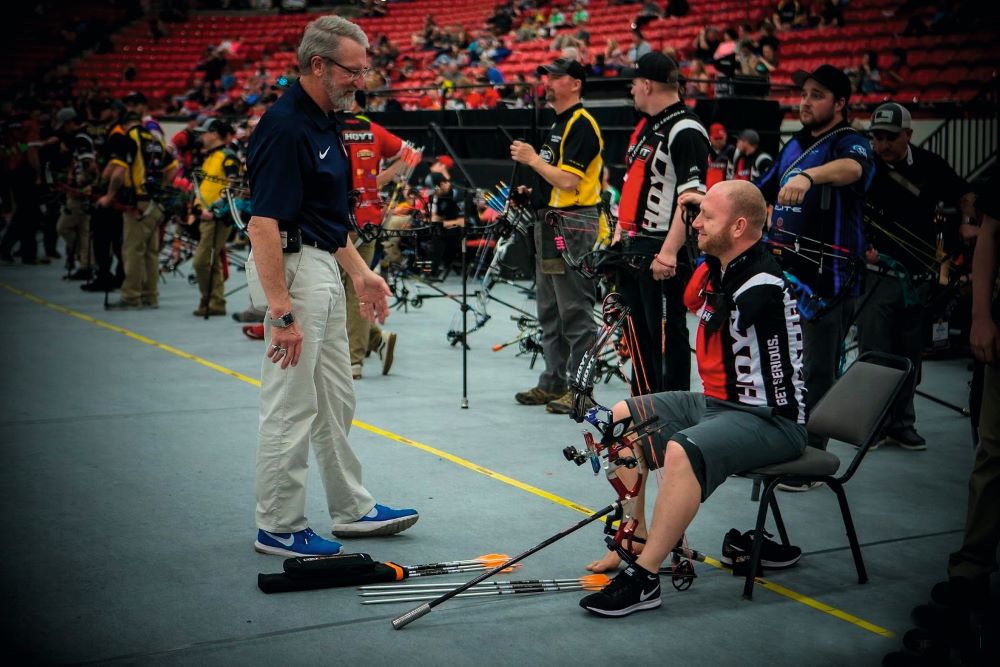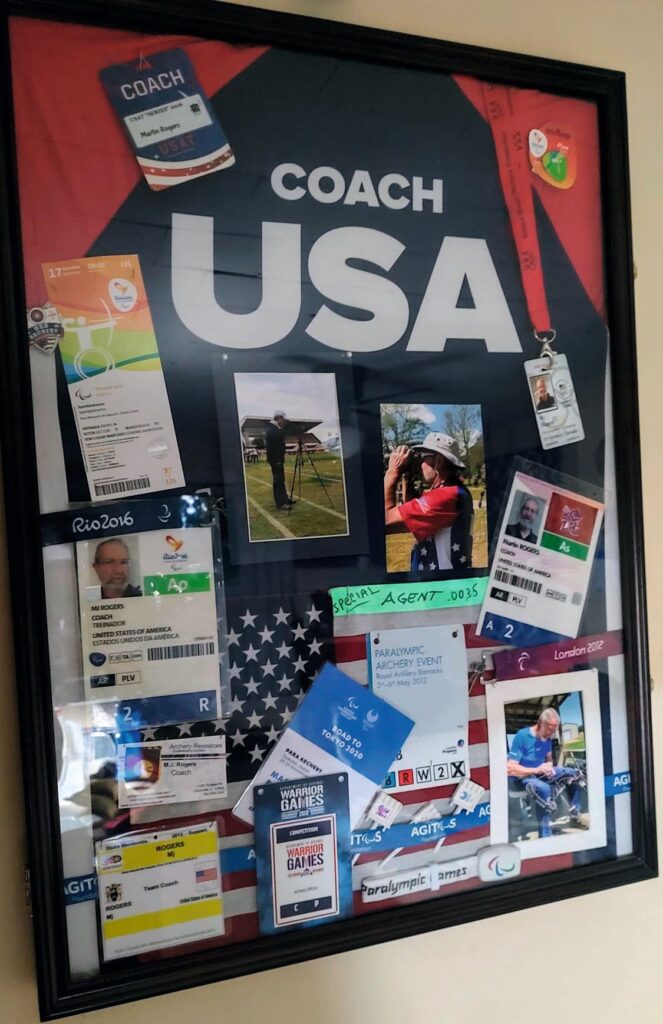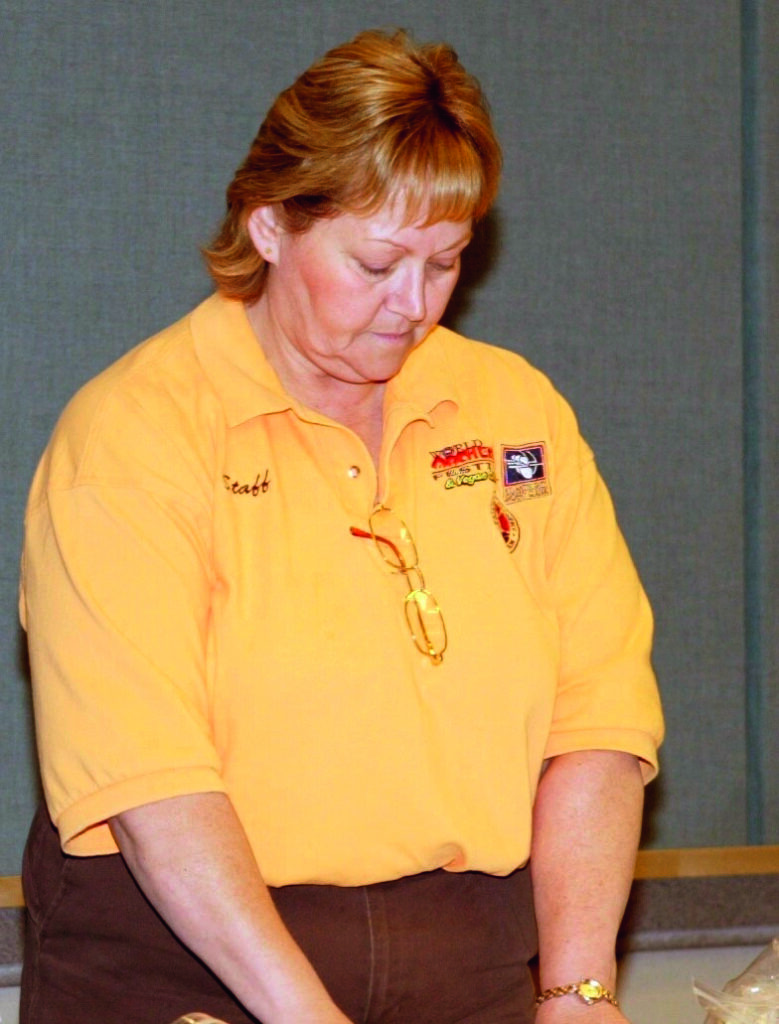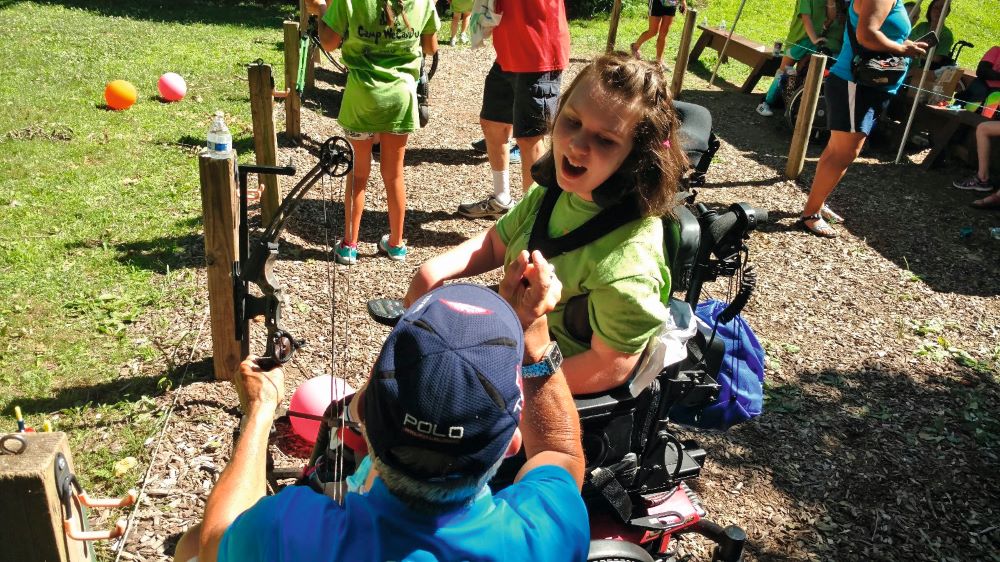Kristina Dolgilevica: Insights into working with the disabled and the paralympic archers
Finding a highly experienced coach who has worked with the disabled and para-athletes is not an easy task. After having contacted many of the industry professionals and world level coaches, one name cropped up all the time. “You have to speak to MJ!” They were right. MJ, I learned, is an incredibly humble, giving and caring coach and is one of the most experienced educators out there.
Martin Joseph Rogers (71), known to most as MJ, is a professional archery coach in the USA. You may have seen M.J. by The Armless Archer’s (Matt Stutzman) side at the recent Tokyo Paralympics (2021), or perhaps in Rio 2016, or London 2012.

M.J. has been coaching for over 30 years, but the last 14 have been spent in teaching and coaching about adaptive archery around the world. Martin is a USA Archery Level 4 NTS coach and has co-authored the first edition of the Adaptive Manual for Move United, a multisport organisation established in 1956 affiliated to the U.S. Olympic and Paralympic Committee, whose mission is to facilitate equal access to sports regardless of physical ability.
M.J.’s archery journey began with recurve over 50 years ago, switching to a compound in the 1970s. He got involved in the more competitive side of the sport in his early twenties. Around that time, Martin’s later-to-be-wife, Marihelen, who was not a shooter, informed him that if the relationship was to continue, she had to have a bow. She turned out to be more competitive than M.J., and thus he ended up traveling along to tournaments, coaching and supporting his wife. Martin said, “our relationship was somewhat unusual, because often spouses do not interact well in the sporting environment; however we have had a good working relationship.”. M.J. shared that it was that desire to learn and to know more that transformed his hobby into a passion and a vocation.


In the 90s both MJ and his wife got involved at national level. In 1997, Marihelen was made an executive secretary to the NFAA, which came with a move to California. Several years later, the USA Archery had an opening at the Olympic training centre in Chula Vista, San Diego, and MJ was hired as the programme manager there. Sadly, Marihelen Rogers passed away 11 years ago, following a battle with liver cancer.
What was it like in the beginning working with the disabled archers?
Part of my responsibilities at the NFAA and Archery USA was event management, so things like set up, the logistics of getting equipment to and from and so on; the interaction with athletes was just the part and parcel of what I did. There was a mix of the able-bodied and the disabled athletes; but the “disabled” label is a misnomer, because there are so many things these athletes can do that I can’t. And one of the things I did was work around the logistics of getting the athletes in wheelchairs around, for instance from the parking lot to the field. I did not see them as anything different – they required the same sort of due diligence. And the transition from my interactions with these athletes was natural; I never saw them as a “chair”, or “the crutches”, or “the nub”, none of those things were a part of their personality. These athletes had separate personalities and separate abilities, the latter often beyond what most manuals say they should be able to do. And that was of interest to me, understanding the capabilities of those that are labelled “uncapable”.
Would you say it was a good learning environment?
This really was the learning environment to me. To this day I volunteer on a programme not too far, and its primarily youngsters. The group is all-inclusive – there is visually-impaired, there is intellectual, physical disabilities, autism – a whole gamut. All of them test me and provide learning for me every time I go. That is such an asset to a coach, because the actions and interactions that you have are unique each and every time. Consequently, you learn about uniqueness, you learn to address things outside the “normal”. You are constantly thinking, how can I make this better for them? How can I allow them to be more successful while their body is in tremors? Or when they are unstable, when they have an ataxia (issues with coordination; condition characterised by loss of muscle control and can affect fingers, hands, arms, legs, body, speech, and eye-movement)? They are incredible to watch and see and to learn from. The patience they have because of their lifestyle is so valuable, it lends that perspective of “OK, my life in not so bad”, and my position allows me to provide betterment.
THE “DISABLED” LABEL IS A MISNOMER, BECAUSE THERE ARE SO MANY THINGS THESE ATHLETES CAN DO THAT I CAN’T.
Has this experience shown you a different perspective on life?
Oh absolutely. I have no excuses. I don’t need to negotiate around sidewalks or cobble stones, or a step to get into a room. What is also important is that, by being around all this, I have become a lot more observant of these issues and I try to enlighten the individuals I interact with about it, be it just friends and neighbours or civic organisations. Able-bodied people are unrestricted and often do not see the restrictions. To give a simple example, in my part of the world, when it’s snowing, the snow piles get shoved onto the handicapped parking area. It is that thoughtlessness that goes into so many day-to-day things of those who are not that observant.
Is archery the most inclusive sport?
It certainly is. I have been fortunate enough in my thirty odd years to be involved in archery. One of the things I always say to the organisers is, “bring in somebody who has never shot before”. A few years ago, when I was in Santiago in Chile, they brought in two wheelchair users; one man was functional but with a spinal cord injury, and he was very capable and needed a few details adjusted – easy process, how to put the hand on the bow and how to draw. The other was a lady with a severe cerebral palsy, she was close to non-functional, yet in a relatively short time she shot the bow, with my assistance and engagement; I was holding and drawing the bow. Even though she was not physically capable of drawing or holding the bow, she was involved in it, counting 3-2-1 and everybody released at the same time. And I have done that all over, and it makes that person a part of the shot in this way. There was another case with the twins who also had CP; and the way we deal with this is that we act as assistants; we put a gate belt around the chair, attaching the release aid on a pull chord, so as the assistant pulls the chair back, the release is triggered. Even with a shaky hand they pull that trigger and are engaged in this activity. There really is not much else for these kinds of athletes than boccia; (a sport similar to bowls that includes people with muscular dystrophy and cerebral palsy).

Are there any cases where a person is not suitable for archery?
I don’t think so… I think that with proper assistant, archery can happen in any degree because it is so adaptive. There are many different kinds of apparatus that will either support the bow, or guide the visually impaired; and in many cases there will be things that are not allowed in the competitive realm, but to a degree, who cares? In most cases, 85% of the individuals that I interact with, they won’t classify (for WA para classifications). So who cares? I will figure out what works best for these archers to be a part of a sport or an activity that no one else believes they can do.
Useful insights into working with the wheelchair users
Mobility, or being able to get around will likely be one of their biggest concerns, falling is another. In regards the latter, because getting back up into the chair is tumultuous, it also adds to the potential of an additional injury. So these athletes will be very cautious in that realm. Wheelchair archers will often have a high bow shoulder, or a lean as part of their process, as their stability comes from only their core (provided they have a command of their core). Some of these athletes will not have the use of their buttocks; some will be sitting on a four-inch-thick pad, which is like sitting on the air cushion. You really need to think about all these considerations when it comes to criticising a high shoulder or their individual stability. I recently did a workshop, where I have immersed the coaches in what it feels like to shoot with all these considerations; I had them sit on a balance ball with their feet dangling, so literally just wobble. Now figure out how you will achieve that stability. It is very enlightening, and you do not realise how much of a big deal it is to shoot in a wheelchair. If you are shooting in a classification where you can use a strap to help you feel more stable, you realise that that is also a restriction, because your movement is limited, and you cannot get the arrow out of the quiver. You do not realise how many restrictions there are unless you experience them, and you do need to work with all these considerations to understand what requires your attention and which solution will work best. The reality is that these athletes have to sit on the line all day long, wind, rain or shine, and you have to perform really well on arrow 2 and on arrow 70. So as a coach you have to work with your expectations, and you have to provide them with the most “comfortable” solutions and surfaces possible.
In your experience, would you say the coaches are generally ill-equipped to deal or understand archers with disability?
Yes and no. Yes – because the adaptive side is just on the grander scale. Anybody that wants to know how to shoot a bow, you adapt the equipment to them, the poundage, the arrow, sight or release aid. One of the advantages in archery is that the bow compensates for so much, so you can allow for archery to happen relatively easy from this perspective; it simply requires thinking outside the box and asking the person what fits them, to show you their mobility. The interaction between the coach and that kind of athlete should be ‘just ask’, because they are OK with those questions, don’t be intimidated or ashamed, and ask them what they can do; (if it is a nub, call it a nub and ask what they can do with it).
Does a coach require additional skills to work with the disabled?
It’s like any other coaching. It doesn’t take that much more effort to make it happen, you just have to be more observant of issues that are obstacles for that person, from equipment to getting round. My job is to allow these para-athletes to perform, to be selfish in their performance. So if it is someone in a wheelchair I will mandate that I will push the chair – they perform the sport. They need to understand that their job is being an archer, not a pusher. They need to understand that I understand that they can push the wheelchair, but it is not their job to do it here.

What advice can you give to help build better rapport with the disabled athletes?
As with any coach-athlete relationship, we need to understand each other, and if they do not understand the words that come out of my mouth, I want them to push back if they cannot relate to what I am saying. That way we can come to a better solution and find a better method. What coaches require is patience, and they need to allow these athletes to experience things for themselves. That allowance is critical. Don’t do it for them, allow them to do it at their own speed. Step back. Observe. Interact when it is necessary and do not be overtly “helpful” – don’t hover over them. That is what is so common and so detrimental to building the rapport between the coach and the athlete. The individuals that I work with, I tell them that they have the final filter, regardless of whether it’s me or a different coach, or a parent giving advice. Often these suggestions come in randomly and these athletes will exercise respectfulness and nod and give it a try. But it often creates an obstacle because more often than not, that “try” does not fit in with their ability, and so it becomes detrimental. But it can also sometimes be successful, and the athletes will be looking at their coach saying, “Why didn’t you tell me that?”. So it is useful to develop that method of communication, so that you are able to test and communicate about the validity of the suggestion with that athlete.
MY JOB IS TO ALLOW THESE PARA-ATHLETES TO PERFORM, TO BE SELFISH IN THEIR PERFORMANCE. SO IF IT IS SOMEONE IN A WHEELCHAIR I WILL MANDATE THAT I WILL PUSH THE CHAIR – THEY PERFORM THE SPORT.
Parents and caregivers; how much do you involve them in the process?
Whoever is providing the care, “the servicer”, I involve them, I want them in all our conversations. Because often you will see that athlete maybe once a month or once a week at best, and it is a team effort here. The athlete, the coach and the supporter need to speak in the same language, because they are all headed in the same direction, and if not, you are wasting your time.
Thank You very much for an inspirational conversation, MJ!
Images supplied by MJ Rogers

